This article needs additional citations for verification .(December 2009) |
Nieczuja is a Polish coat of arms that was used by many szlachta families in the Polish–Lithuanian Commonwealth.
This article needs additional citations for verification .(December 2009) |
Nieczuja is a Polish coat of arms that was used by many szlachta families in the Polish–Lithuanian Commonwealth.
| | This section is empty. You can help by adding to it. (July 2010) |
Gules, a Brunâtre stock or tree stub, with three lopped branches on the dexter, and two on the sinister (rarely reversed), all proper, debruised of a cross or sword in chief, also proper.
Out of a crest coronet, between two vols, the arms of the shield is repeated.
There is also older version of Nieczuja coat of arms. Azure, an Argent stock or tree stub, with four lopped branches on the dexter, and four on the sinister, all proper, debruised, of a cross or sword in chief, also proper.
Notable bearers of this coat of arms include:

Nałęcz is a Polish coat of arms. It was used by associated szlachta families in the Kingdom of Poland and the Polish–Lithuanian Commonwealth (1569–1795).

Jastrzębiec is one of the most ancient Polish coat of arms. Dating back to the 10th century, it has been used by Poland's oldest szlachta families — Poland's Immemorial nobility — and remains in use today.
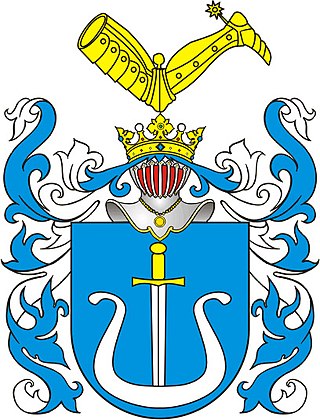
Nowina is a Polish coat of arms. It was used by several szlachta families in the times of the Polish–Lithuanian Commonwealth. The original clan consisted of only 24 families.
Godziemba is a Polish coat of arms. A rare medieval Polish knightly coat of arms used by Polish and Austrian noble family Głownia.

Poraj is a Polish Coat of Arms. Used by several knighthood families of medieval Poland and noble families of the Polish–Lithuanian Commonwealth - those descended in the male-line from the Poraj family and those allowed into the heraldic clan by adoption.
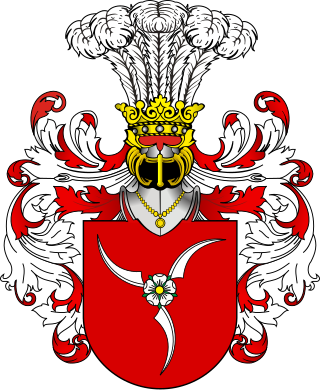
Rola is a Polish coat of arms. It was used by several szlachta families in the times of the Kingdom of Poland and Polish–Lithuanian Commonwealth.

Trzaska is a Polish coat of arms. It was used by several szlachta families in the times of the Polish–Lithuanian Commonwealth.

Topór is a Polish coat of arms. It was used by several szlachta (noble) families in medieval Poland and under the Polish–Lithuanian Commonwealth.

Rawa (Rawicz), is a coat of arms of Polish origin. It was borne by several noble families of Polish–Lithuanian Commonwealth, Russian Empire and Ukraine.

Odrowąż is a Polish coat of arms of probably Moravian origin. It was used by many noble families known as szlachta in Polish in medieval Poland and later under the Polish–Lithuanian Commonwealth, branches of the original medieval Odrowążowie family as well as families connected with the Clan by adoption.

Kościesza - is a Polish coat of arms used by szlachta families in the times of Kingdom of Poland and the Polish–Lithuanian Commonwealth.

Kryszpin is a Polish coat of arms. It was used by several szlachta families in the times of the Polish–Lithuanian Commonwealth.
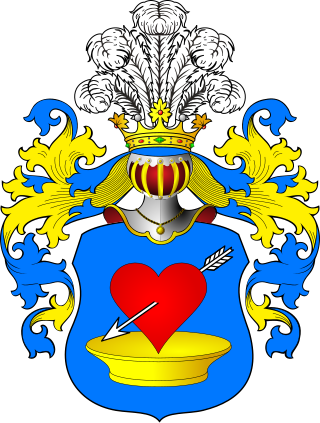
Przyjaciel also known as "de Pryjatel" and "Amicus" is a Polish coat of arms. It was used by several szlachta (noble) families under the Kingdom of Poland and the Polish–Lithuanian Commonwealth.

Hozyusz is a Polish coat of arms. It was used by several szlachta families.
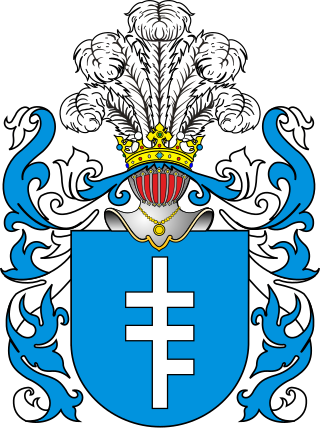
Pilawa is a Polish coat of arms. It was used by many noble families known as szlachta in Polish in medieval Poland and later under the Polish–Lithuanian Commonwealth, branches of the original medieval Piława Clan (Pilawici) family as well as families connected with the Clan by adoption.

Herb Prus III is a Polish coat of arms. It was used by several szlachta families in the times of the Polish–Lithuanian Commonwealth.

Kotwica is a Polish coat of arms. It was used by several szlachta (noble) families under the Polish–Lithuanian Commonwealth.
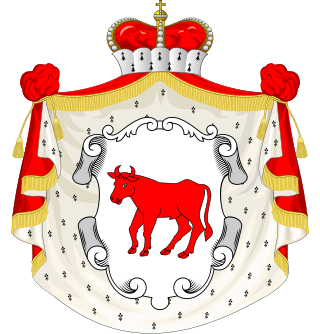
The House of Poniatowski is a prominent Polish family that was part of the nobility of Poland. A member of this family, Stanisław Poniatowski, was elected as King of Poland and reigned from 1764 until his abdication in 1795. Since Polish adjectives have different forms for the genders, Poniatowska is the equivalent name for a female member of this family.
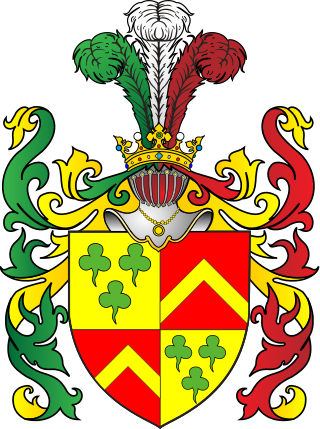
Haller is a Polish coat of arms. It was used by the Polish-German Haller de Hallenburg family. The surname Haller was first found in Saxony, where the name could be considered to have made an early contribution to the feudal society which became the backbone of early development of Europe. The name probably derived from the city of Halle, became prominent in local affairs and branched into many houses which played important roles in the savage tribal and national conflicts, as each group sought power and status in an unstable territorial profile.
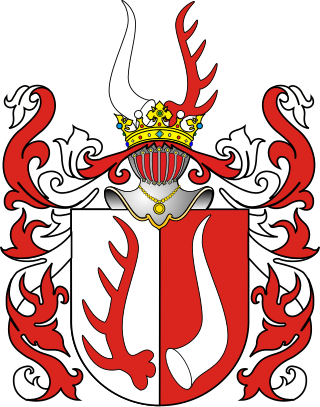
Rogala is a Polish coat of arms, likely imported from Germany to Poland in 1109 by the Rogala or the Ribersztein family, that then added the second horn. It was used by several szlachta families in the times of the Polish–Lithuanian Commonwealth.